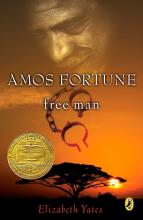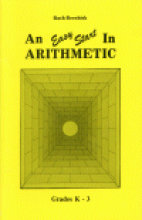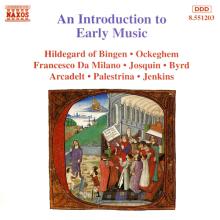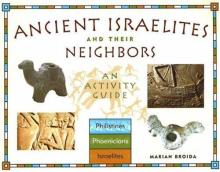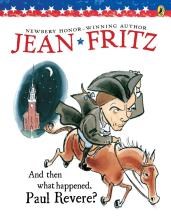No name
American History, Grade 5
The seven units and twenty-eight chapters are fairly brief at an average of ten pages, and the reading level is appropriate for fifth and sixth grade students. In the chapters are loads of black and white illustrations, maps and timelines. The end-of-chapter questions are all discussion and short answer or essay type, with a list of persons, places, and terms that might be useful for a timeline book assignment. In addition, there are some "Interesting Things to Do" that are more research and hands-on oriented. The end-of-unit questions are also discussion or essay type, critical thinking questions. Also included are a section called "Linking Geography to History", more "Interesting Things to Do", and a list of additional books to read. Many of the titles on the book list are familiar to me as they are what is presently being discarded from the library. Many of them are are out-of-print, but others are currently being reprinted in inexpensive paperback editions. If essay questions are more than your student is able to tackle, the corresponding test booklet includes tests in the typical multiple-choice and fill-in-the-blank format.
The Teacher's Manual contains the unique part of this course, and I would recommend its purchase as essential to getting the best out of this course. The reprinted edition is 95 pages long and is comb-bound. Its focus is on Christian social principles, which are outlined as an introduction to the Teacher's Manual and the course. Each unit has introductory information for the teacher, as well as an introduction to each chapter's material. These background notes are keyed to the list of Christian social principles and historical perspectives detailed in the introduction. Without this teacher's guide, I'm positive that I would have missed all of this. There is also a suggested test for the unit. For each chapter, the teacher's manual also includes a list of important terms and concepts, a useless-to-me list of related educational films and filmstrips, the answers to all of the student's questions, "Ideas to be Developed", and "Teaching Procedures". Because of the chronological arrangement of information, I think that the background information in the teacher's manual would be useful no matter which text you use.
Also available are a test booklet mentioned above and the answer key to the tests.
Nihil Obstat and Imprimatur
Amos Fortune: Free Man
Amos Fortune is the true story of a man who was born in Africa – the son of a great chief – and was kidnapped (along with many people from his tribe) and taken to America, where he was sold into slavery. He was purchased by a Quaker family in New England who treat him more like a son than a slave and teach him to read and help him to embrace the Christian faith. Through an agreement with his first owner, Amos eventually earns his own freedom. He proceeds to work very diligently and live very simply in order to earn enough money to buy the freedom of several other slaves over the course of his lifetime. The author simply portrays the virtues of diligence, patience and perseverance evident in this honest man. The story takes place at the time of the American Revolution.
An Alphabet of Catholic Saints
Also available in softcover
An Easy Start in Arithmetic
I've really enjoyed using Ruth Beechick's suggestions in this little booklet for introducing Mathematics to my young children. I think she does an excellent job of explaining how children learn and understand Math. She also lays out a very natural way of encouraging an interest in Math. This little booklet, which can be read rather quickly, also includes activities for learning Math from Pre-K through 3rd grade! In Designing Your Own Classical Curriculum, Laura Berquist recommends using this book for Kindergarten.
Available in a set called The Three R's that also includes A Home Start in Reading and A Strong Start in Language.
An Egg is Quiet
An Introduction to Early Music
This is a very beautiful, if eclectic recording of Gregorian Chant, Renaissance Polyphony and some miscellaneous "popular" tunes from numerous European countries (ranging from the 11th to the 17th century). Composers include Hildegard of Bingen, William Byrd, Giovanni da Palestrina and Josquin des Prez. An enclosed booklet gives brief biographies of these and other major composers of the time. I think this is a nice place to start for those unfamiliar with early music. Everyone at our house enjoyed the recording very much.
An Invitation to Joy
This beautiful coffee-table book is filled with full-color photos of the Pope and quotes from his writings and talks organized into the following chapters: The Human Family: Youth, Family, Love, Women, Work and Rest; The People of God: Mary, Vocation, Saints, Prayer, Forgiveness, Death and Eternal Life, Other Christians Other Religions, Laypeople; The Dignity of the Human Person: For Life, Human Rights, Solidarity, Freedom, Peace and War, Suffering and Evil with a brief biographical portion entitled "A Lifetime of Devotion". Each chapter and subchapter have a brief commentary by Greg Burke, TIME Magazine's Rome Correspondent, who overviews the Pope's and the Church's teachings on these basic areas of life. The commentaries are quite good and outline teachings on topics such as abortion, divorce, ecumenism and the role of lay people in the Church. Although the commentaries and quotes touch upon difficult topics such as human sexuality and drug abuse, they are handled in a sufficiently thoughtful fashion for me to consider them appropriate for high school or adult reading.
To a certain extent, the book is aimed at those outside the Church who may benefit from the Pope's message and so the text explains concepts like what the Rosary is and basic Catholic teaching on devotion to Mary in a very simple way. To me the book offered a fascinating concept to consider - that the Pope is presenting himself as the authentic spiritual leader of the whole world and presents the basic teachings of Christ in a way unheard of in the past. In these beautiful images of the Pope and his flock can be seen two aspects of the face of Christ. First, Christ as the Good Shepherd who cares for all of his flock - even the least and farthest away. Second, the face of Christ as he taught us in the Gospels to see in the poor and suffering - the least of his brethren. The short biographical portion contains numerous photos of Karol Wojtyla in his childhood, early adult life and his years as a young priest, bishop and cardinal.
Ancient Israelites and Their Neighbors: An Activity Guide
Ancient Israelites and Their Neighbors: An Activity Guide is not what I had expected. Because I had seen it advertised in a teacher supply store, I was anticipating lesson plans and a very "teacher-y" feel to the book. Instead, it is written as if it were for the student to read himself from front to back, much like he would read an interesting story. Covered in the text are discussions of the Philistines, Phoenicians, and the Israelites, cultures which are largely under-represented in elementary history studies.
The uncluttered pages with line drawings and black-and-white photographs focus on daily life rather than on wars, military leaders, and historically significant events. There are no review questions, suggested writing or research topics, or test materials. However, there are descriptions of the history and geography, architecture, clothing, writing, work, food, and religion of each of the three groups discussed. Also included are very simple maps, a brief summary, a timeline, and a bibliography for further reading.
The book contains long textual passages of several pages, interwoven with activity and project directions. The fairly-involved projects include sewing and adorning costumes, the building of models and ships, dye-making, and cooking. Measurements and recipes are given in standard American unit measures and in metric. These are not simple projects that my own young children could complete on their own; parental supervision and participation is definitely required. In spite of the effort needed, the projects are creative and memorable; completing a select few of them would appeal to even the most history-resistant student.
I noted, however, a few problems from the perspective of a Catholic homeschooling family. First, the majority of the history of the Israelites is derived from the Bible, but I found it difficult to reconcile the author's opinion that only parts of the Bible are reliable. A particular translation of the Bible is not referenced in the lengthy bibliography. The author notes that archeology can help to show that Biblical events really occurred, but she says that anything in the Bible about God, miracles or spiritual matters cannot be proven because that is a matter of faith. In addition, although the Bible is used as a historical reference, secular dating conventions (BCE rather than BC, and CE rather than AD) are used, adding another element of confusion. As with all secular materials, the author presents an equality amongst all religions, ancient and modern.
Secondly, there are several mentions made of child sacrifices in both the Israelite and Phoenician cultures. I think that this is unnecessary in a book intended for elementary students. The author writes (on page 44) that the Bible even mentions some Israelites sacrificing children to other gods. We know that this is meant to describe unacceptable sacrifices, but the text could be very confusing to young children.
Another confusing statement is this from page 126: "One of the greatest legacies of the Philistines was their effect on the Israelites. We might not even have the Bible. Even if we did have a Bible, it would not be the same Bible we have today."
It is difficult to find materials for younger children when studying this geographical area and time period of history. Because of that, I can recommend this book, with the qualification that the teaching parent is aware of its shortcomings. It may be best to use this book as an enrichment to a textbook or Biblical-based historical unit study rather than as the primary source of information.
This title was donated for review by Chicago Review Press
And Then What Happened, Paul Revere?
This is a humorous yet informative account of Paul Revere's famous ride to alert the countryside that "the Redcoats" were coming. The details are quite interesting and carefully researched (down to a few details that Paul Revere liked to include when telling the story to his own grandchildren). There are a few slightly annoying details in the illustrations, but I wouldn't consider them serious (e.g. a picture of a Boston scene that includes a picture of a pirate's head – not detailed enough to be gory, but a bit gross) . Fully illustrated (not fabulous illustrations, but they suffice) and appropriate for early grade school.


